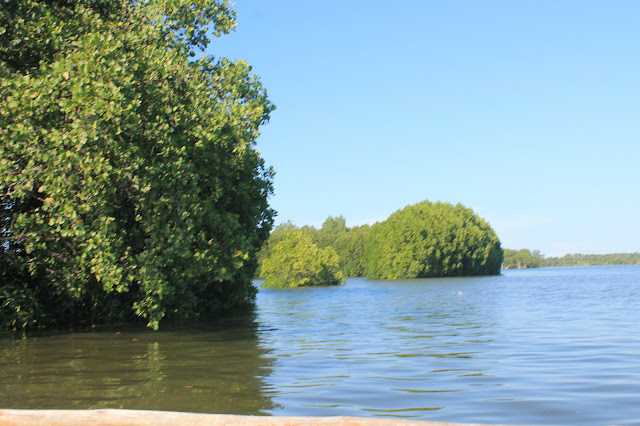During
my recent trip to Aklan, i decided to refrain from proceeding to its
more popular tourist destination (Boracay) and explore another aklan
attraction, the mangroves, a perfect place to just relax and commune with nature!
Mangrove
forest is also known as the “rainforest of the sea.” It grows well in
tropical countries, including the Philippines. Mangroves are an
important part of the coastal and marine ecosystem that includes the
seagrass and the coral reefs. Of the world’s more than 70 mangrove
species, around 46 species are known to occur in various parts of the
country.
In the morning, I visited the Bakhawan Eco-Park located at Barangay Bachaw Sur, Kalibo Aklan. It's a 220-hectare Mangrove forest of reclaimed land created by the Kalibo Save the Mangrove Association.I walked through the 1.3 KM bamboo trail bridge that goes through the lush mangrove forest lush mangrove forest! Nipa, Pagatpat, Piyapi and Bakhawan
are among the types of mangroves that can be seen in the park that
benefit from the brackish water of Aklan River and the Sibuyan Sea.
The mangrove reforestation and protection
was initiated in the 1980s by
the then-mayor Atty. Allen Salas Quimpo. What started with 50 hectares
of mangrove plantation grew to be one of the most successful reforested
areas in Asia through the combined efforts of USWAG Development
Foundation Inc., LGUs and volunteer citizens. The park was also a
recipient of Golden Eagle Award for Excellence in Environmental
Preservation.
Roughly a 30-minute tricycle ride from
the town proper of Kalibo., entrance fee is 20 pesos each for adults and
15 pesos for students and
Senior Citizens. They are open from 8:00 am to 5:00 pm. There's a
Canteen and a Gift Shop near the entrance if you need to buy some
souvenirs or refreshments.

In the afternoon, I travelled to New Washington ( the hometown of the late Jaime Cardinal Sin) for the Isla Capispisan Magrove reforestation. From afar, the area seemed like islets filled with mangroves. Upon close scrutiny, the magroves were planted in the middle of the sea. It is also known as Andagao Bay Island.
We took a 15-min. banca ride from the municipal wharf to reach the a 32-hectare mangrove reforestation project / mangrove-planted fishpond by the Aklan State University (ASU).The rent for the boat was P400.00. We were told that you can stay overnight in the area as one can use the ASU staffhouse for free. Just bring your own provisions.
Capispisan, they said, means "birds"since the mangroves serve as habitat for the birds. Indeed, we saw many birds flying in the area as the sunset approaches.
The Isla Capispisan recently gained recognition from the National Economic Development Authority (NEDA) and the Commission on Higher Education (CHED) for ASU's exemplary university extension project.The planting of mangrove propagules and a clean up drive are good ways of helping our environment.
Once planted, a mangrove can grow a little
less than three feet on its first year and that’s not fast enough if
you’re trying to conserve life that’s why it needs a lot of attention
and fostering to help it survive and endure certain conditions in the
island.


















Wonderful place, isn't it ! Am so glad you visited it .
ReplyDeleteMangrove Place